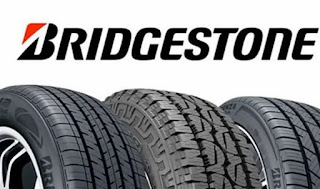Different Tread Patterns:- Explained
A vehicle successfully takes you to a location because of its smooth workflow. Various components together make the car movement possible. Tyres occupy a unique place in this list. They are designed with utmost care and sincerity. Companies making these tyres employ a lot of thought and consideration in tyre structure.
One of the major parts of a Goodyear Tyres Newcastle Upon Tyne is the tread compound. It is the outermost area, which is mainly black. The tread compound is engraved with a tread pattern. It’s exciting to know that tyres have different types of tread patterns. They are used depending on the road conditions and the driver’s preference.
Types of Tread Patterns
Rib Pattern
Tyres with a rib pattern include S-shaped voids running along the axis of the tyre surface. These tyres provide the advantage of lower resistance. You get good directional stability as the voids are evenly distributed throughout the tread area. The rib pattern offers lateral resistance, which provides good steering control.
These patterns also provide comfortable high-speed driving by resisting the heat. This usually benefits motorsport drivers. Despite these huge advantages, Rib pattern tyres have some disadvantages. They fail to grip well during acceleration and braking on wet roads. They are also vulnerable to extreme situations and can eventually crack.
Lug Shape
The pattern features a series of grooves that are placed perpendicular to the circular edges of the tread compound. It offers improved traction and outstanding grip in various conditions. Acceleration and braking also become smooth with a pair of lug-shaped tyres.
The drawbacks of these tyres include excessive noise at high speeds and higher rolling resistance. This pattern is usually seen in 4 x 4 off-road tyres.
Rib-lug Shape
This tread design is a combination of the above two mentioned patterns. It consists of S-shaped voids along with a series of grooves. You get proper directional control and impressive grip while accelerating and braking. The driving power delivered by this pattern is maximum. However, this tread design is not suitable for all road types.
Block Shape
This pattern consists of independent blocks that are separated by a series of grooves. They are joined through interconnections. Block-shaped tyres offer better grip and steering control on wet and snowy roads.
Asymmetric Shape
Tyres featuring this pattern have a different tread design on each side of the tread. Bigger blocks are on the outer side while the inner ones are smaller. They offer comfortable high-speed cornering abilities and are resistant to tread wear. You need to be careful with the positioning as the tyre has different patterns on both sides.
Directional Pattern
This pattern is the most common one and features a series of lateral grooves placed at similar angles. You get optimum traction and braking performance. It is suitable for high-speed driving. Again, you need to be careful with the orientation as the angles should be placed correctly.
Now that you know about the different Car Tyres Newcastle Upon Tyne tread patterns, you are all set to make the purchase. Considering the different tread patterns, it is now easier to identify their usage.



Comments
Post a Comment